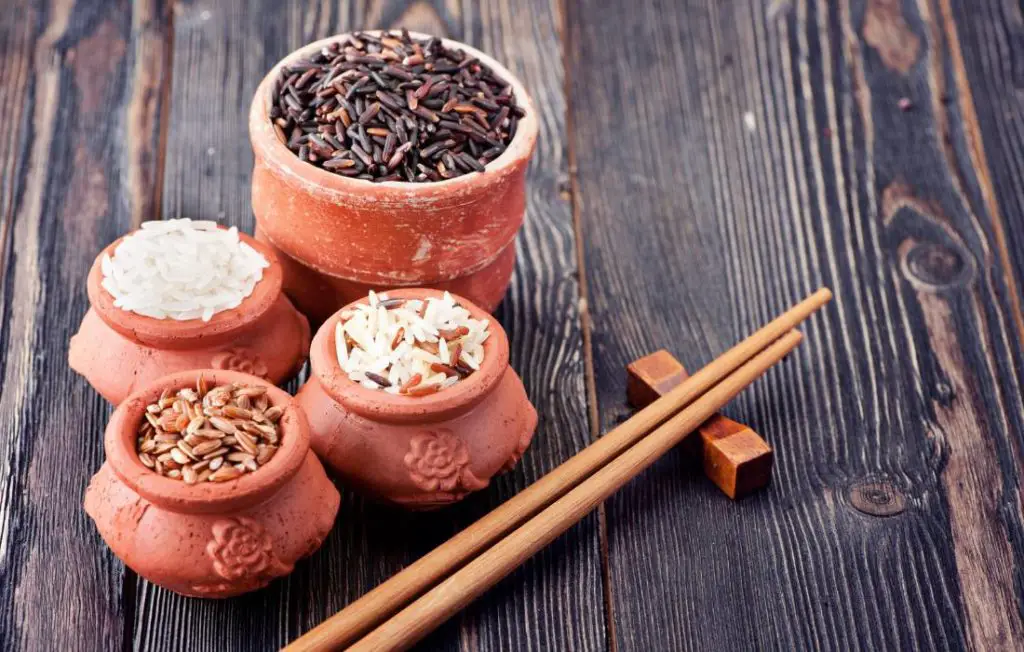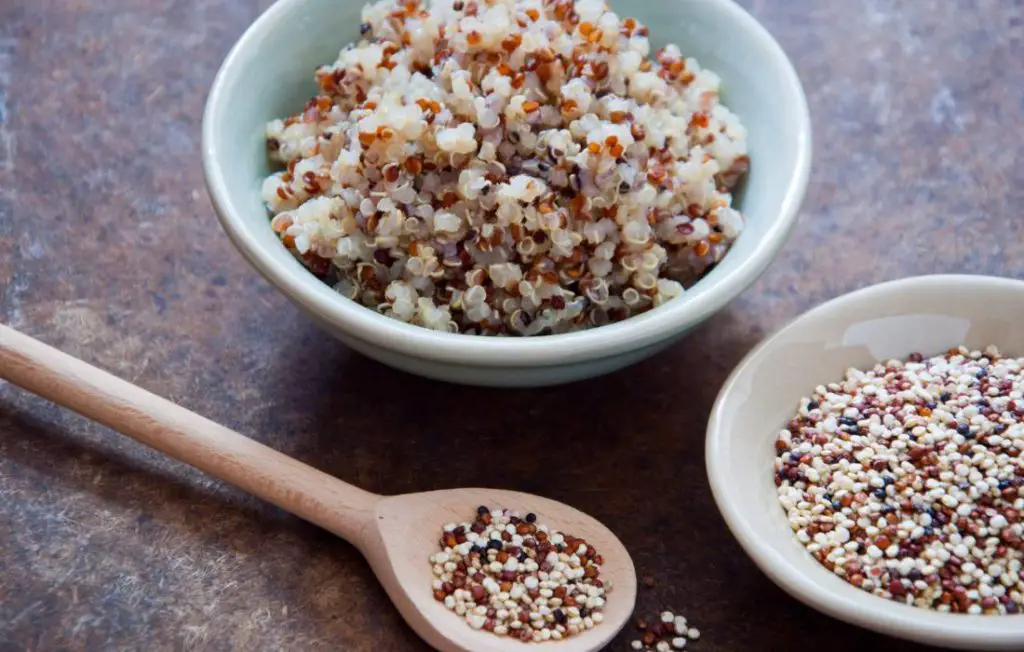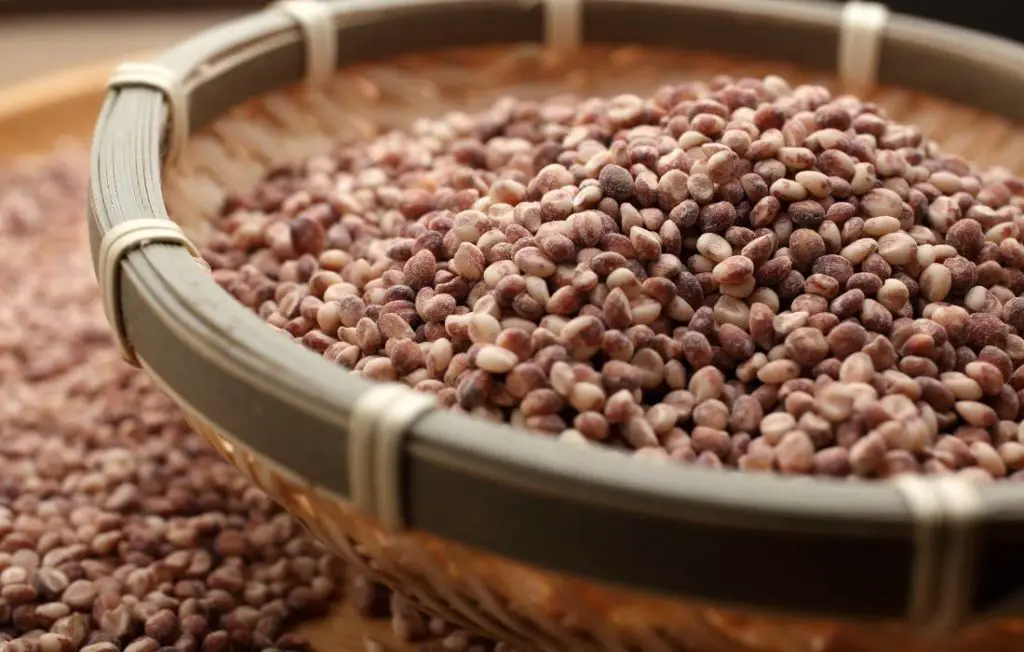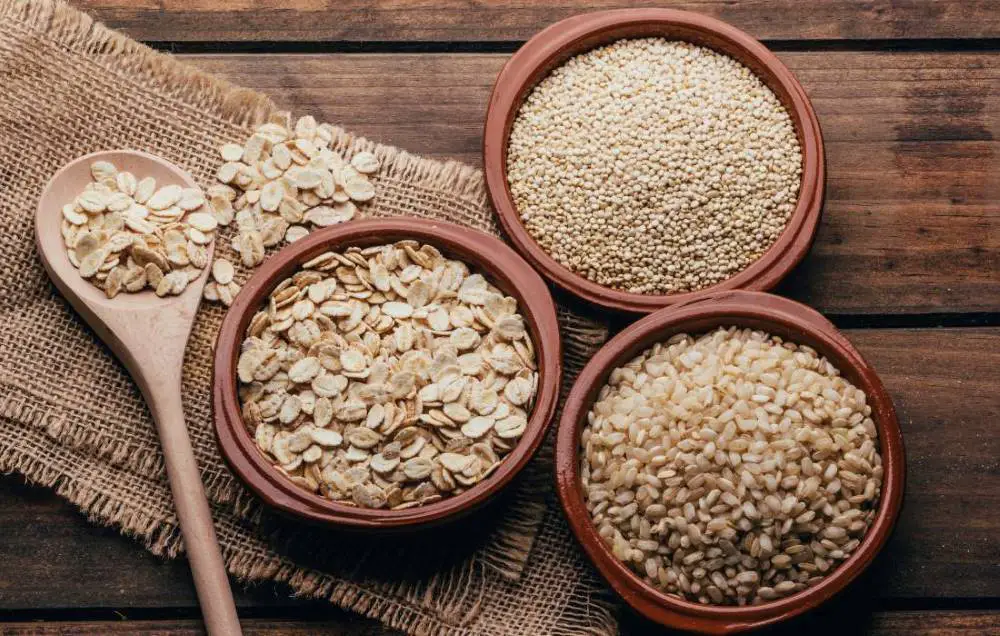If you have histamine intolerance, you might question whether you can consume grains and whether there are low-histamine grains that won’t increase your body’s histamine burden.
Fortunately, there are whole grains that are low histamine and can be part of a healthy diet in moderation. Let’s look at some low histamine grains. Find out more about low-histamine flour too.
Oats Are a Low-Histamine Grain
Wake up and smell the oats! One thing to love about oats is they are naturally low in histamine, making them a great choice if you follow a histamine-restricted diet.
Plus, oats are packed with fiber, which can help keep you feeling full and satisfied throughout the morning, as well as support healthy digestion and regularity.
Oats are also a good source of vitamins and minerals, including magnesium, phosphorus, and zinc. These minerals are essential for healthy bones, muscles, and immune function.
And if you’re looking to manage your blood sugar levels, oats are a great choice thanks to their slow-digesting carbohydrates, which can help prevent spikes in blood sugar and keep you feeling energized all morning long.
Oats also contain phenolic compounds called avenanthramides, antioxidants that also have anti-inflammatory activity. If you have histamine intolerance, anti-inflammatory foods may offer added benefits.
Any diet and lifestyle habits that reduce inflammation are beneficial for histamine intolerance and health.
Although oats are a low-histamine food, research shows that they may contain small quantities of histamine and other biogenic amines, including tyramine and cadaverine, in varying amounts depending on how they’re processed. (2)
That’s why you should consume them in moderation and monitor your symptoms. Most people with histamine intolerance can tolerate oats.

Rice
If you’re following a histamine-restricted diet, you may wonder whether rice is a safe option to include in your meals. While rice is a food low histamine, different types of rice can vary in their histamine content.
For example, white rice is lower in histamine than brown rice, because processing removes the outer bran.
Yet brown rice, white rice, and wild rice are all low enough in histamine and other biogenic amines that it’s safe if you have histamine intolerance.
Brown rice is deemed a healthier option, since it’s less processed. For example, brown rice is higher in fiber than white rice. This means it helps keep you feeling full for longer, which can be a benefit if you’re trying to maintain a healthy weight.
Plus, it’s easier on your blood glucose level, since it’s less likely to cause blood glucose spikes. (3) Additionally, brown rice is also a great source of vitamins and minerals, including magnesium, phosphorus, and selenium.
One caveat is brown rice contains higher levels of inorganic arsenic, a potential cancer-causing agent. (4) That’s why it’s best to avoid eating brown rice daily and don’t use a concentrated source of brown rice, like brown rice syrup.
Buckwheat
Buckwheat is not technically a grain, but rather an herb seed related to rhubarb plants (it’s actually known as “kasha” in Russia.
Some people who are sensitive to gluten may also experience symptoms when eating buckwheat products. That’s because they contain similar proteins called avenin that cause irritation for people with celiac disease or celiac sensitivity.
Buckwheat is low histamine, but only if the outer peel of the grain is removed. The peel contains fagopyrine, a protein that causes problems for some people with histamine intolerance. Despite this, there’s no evidence that fagopyrine increases histamine levels.
Buckwheat also contains oxalates and lectins that are problematic for some people. Oxalates increase the risk of calcium oxalate kidney stones, and oxalates and lectins also reduce the absorption of some minerals, including zinc and calcium.

Quinoa
Quinoa is a gluten-free seed popular for its nutty flavor and versatility. Quinoa is a complete protein, meaning it contains all nine essential amino acids that our bodies cannot produce on their own.
This makes it an excellent choice for vegans and vegetarians looking for a complete protein source. (6)
Plus, quinoa is high in fiber, which helps improve digestion and keep us feeling full for longer periods. This seed, also known as a pseudo-grain, is also packed with essential vitamins and minerals, such as magnesium, potassium, and iron, making it a nutrient-dense food and reliable source of plant-based protein.
Best of all, quinoa is low histamine and safe if you have histamine intolerance. It can be a healthy substitute for brown rice, and it doesn’t contain inorganic arsenic like brown rice.
Quinoa is also high in protein and fiber, and a good source of nutrients, such as copper, manganese, and zinc, which helps reduce inflammation.
Quinoa is a tasty addition to oats if you prepare hot cereal for breakfast. To prepare this hearty and healthy breakfast, simply cook your oats according to your usual method, and then add a cup of cooked quinoa to the pot.
You can enjoy it with your favorite low-histamine milk alternative and a low-histamine fruit, such as blueberries. Find out whether packaged breakfast cereals contain histamine.
Sorghum – A Low Histamine Grain
Sorghum is a cereal grain that has been cultivated for thousands of years. It’s gluten-free and has a mild, nutty flavor, making it a popular choice for those with gluten intolerance.
In addition, it’s low in lectins, but has moderate oxalates. Best of all, it’s low histamine and safe if you’re on a low-histamine diet.
Yet sorghum is not completely free of biogenic amines. One analysis found other biogenic amines in sorghum, including spermine, spermidine, putrescine, and cadaverine. (7)
These biogenic amines accumulate in response to environmental stress. So, if you consume sorghum, monitor for histamine intolerance symptoms carefully by keeping a food diary.

High-Histamine Grains to Avoid
Just as there are low-histamine grains, there are some grains to avoid if you have histamine intolerance. These include:
- Wheat
- Rye
- Barley
- Spelt (a type of wheat)
- Kamut (another type of wheat)
Gluten May Also Trigger Histamine Intolerance Symptoms for Some People
The histamine content of grains varies with how they’re processed and stored. (8) It’s not so much the histamine content of these grains that’s important; these grains all contain gluten. Grains that contain gluten can trigger histamine release for some people.
Gluten is a protein found in wheat, barley, and rye (and some other grains). It’s what makes dough stretchy and helps bread rise when baked–but it also triggers an immune response in people with celiac disease or non-celiac gluten sensitivity (NCGS).
If you have NCGS and eat gluten-containing foods regularly, symptoms like diarrhea or constipation may occur within hours after consumption. Other symptoms include abdominal pain, bloating and gas.
Find out whether white bread contains histamine.
Soaking and Sprouting Grains
Soaking and sprouting are two ways to reduce compounds of concern in grains. Soaking is a simple process that involves soaking the grain for a period of time, usually overnight or for about 8 hours.
Sprouting involves soaking the grain for a shorter period of time, then draining off excess water and allowing them to germinate until they reach their desired length (usually 2-3 days).
Both methods allow enzymes present in the seed to break down phytic acid and other anti-nutrients like lectins, which can cause digestive distress when consumed in large amounts.
Depending on how the process is carried out, the final product can still contain some histamine. So, don’t count on these approaches to lower the histamine content of high-histamine grains. Stick to low-histamine grains. Also, find out whether corn tortillas are low histamine.
Low-Histamine Grains: You Have Options
As you know, a low-histamine diet can be challenging to follow, but incorporating low-histamine grains into your meals can expand your dietary options and provide necessary nutrients. By opting for these grains, such as quinoa, rice, and oats, you can enjoy a variety of delicious meals without triggering histamine-related symptoms.
Remember to always consult with a healthcare professional before making any significant changes to your diet, and keep a diary of your symptoms. Curious whether grits contain histamine?
References:
- Yves Hsieh. “Effects of Oats (Avena sativa L.) on Inflammation: A Systematic Review and Meta-Analysis of Randomized Controlled Trials”. 2023. Www.Frontiersin.Org. https://www.frontiersin.org/articles/10.3389/fnut.2021.722866/full.
- Wójcik W, Łukasiewicz M, Puppel K. Biogenic amines: formation, action and toxicity – a review. J Sci Food Agric. 2021 May;101(7):2634-2640. doi: 10.1002/jsfa.10928. Epub 2020 Dec 12. PMID: 33159318.
- “Can brown rice slow the spread of type 2 diabetes?.” 03 Jan. 2012, https://www.hsph.harvard.edu/news/features/gnet-brown-rice-diabetes/.
- “Arsenic in Rice and Rice Products Risk Assessment | FDA.” https://www.fda.gov/food/cfsan-risk-safety-assessments/arsenic-rice-and-rice-products-risk-assessment.
- “Are anti-nutrients harmful? – The Nutrition Source.” https://www.hsph.harvard.edu/nutritionsource/anti-nutrients/.
- “Quinoa | The Nutrition Source | Harvard T.H. Chan School of Public Health.” https://www.hsph.harvard.edu/nutritionsource/food-features/quinoa/.
- “Bioactive amines in sorghum: Method optimisation and influence of line, tannin and hydric stress”. 2023. Www.Researchgate.Net. https://www.researchgate.net/publication/267571969_Bioactive_amines_in_sorghum_Method_optimisation_and_influence_of_line_tannin_and_hydric_stress.
- “Low-Histamine Diet”. 2023. Www.Healthline.Com. https://www.healthline.com/health/low-histamine-diet.

